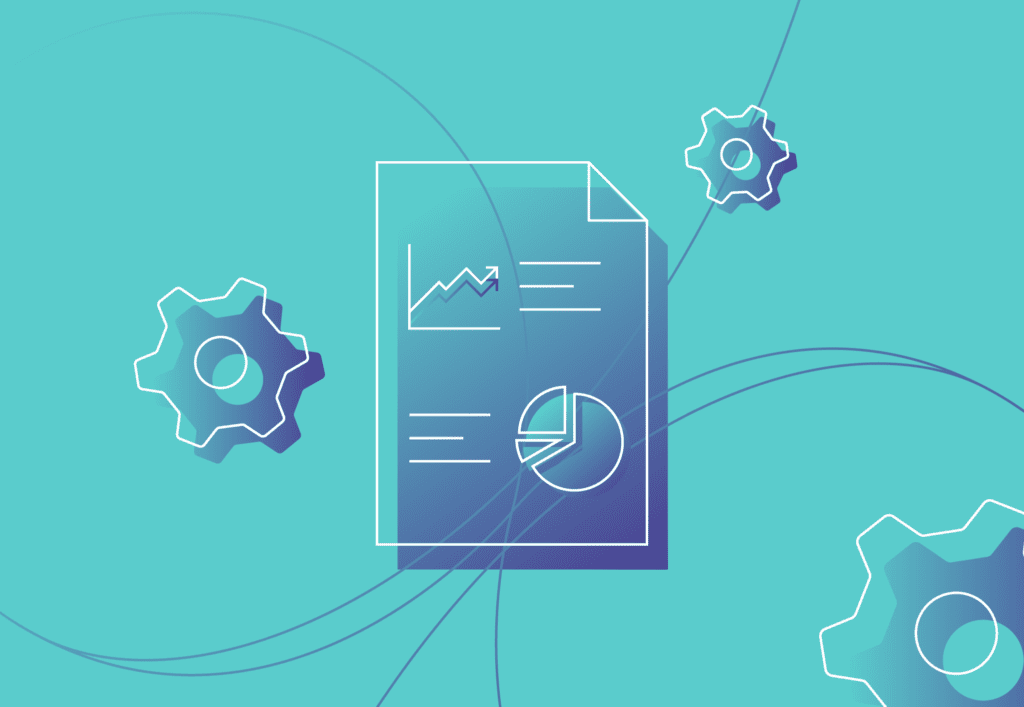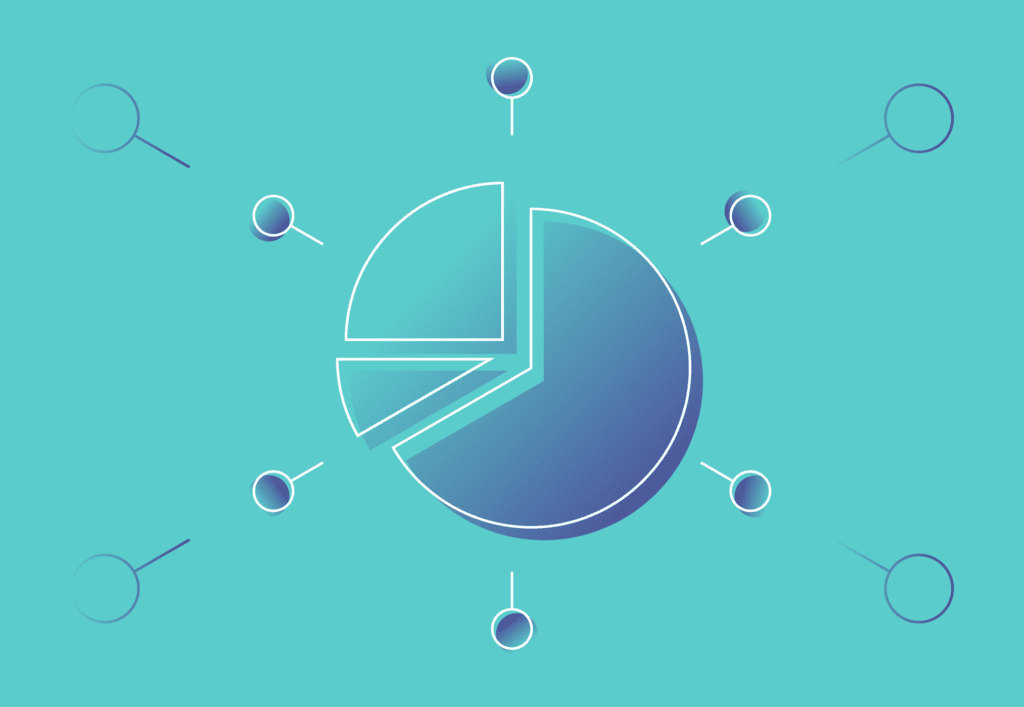
PPC Bid Strategies
Do you think PPC is too expensive, are you questioning your return on investment and are you worried about campaign performance, even though your keyword strategy is solid? All of these concerns boil down to one key question: are your PPC bidding strategies working?
When it comes to creating a pay-per-click campaign, bidding strategies are absolutely key. Having a strong bidding strategy is the difference between consistent exponential growth and accidentally spending your campaign’s entire budget in one day!
In this guide, Embryo’s PPC experts will be taking a look at what bid strategies are, how they can impact your search campaigns and giving their advice on the best bidding strategies for different campaigns.
So to make sure you or your PPC agency are using the best bidding method for your campaigns, keep reading or get in touch with Embryo!
Want to know more about paid search?
Our award-winning team of PPC experts will be more than happy to answer any questions you have or carry out a PPC audit for your business.

We started working with Embryo on a temporary basis due to a knowledge gap in our team in PPC. The experts at Embryo share ideas across the board where they feel they might benefit our brand - this type of relationship is invaluable - Thank you team Embryo!
What Are Bid Strategies?
Bid strategies are important as they are the centre of what’s at stake when running PPC ads – your ad spend.
For each search term that has ads running on it, Google runs an auction of all relevant advertisers to determine whose ads will show and at what positions.
Google uses bidding strategies to determine if and when your business’s spend in each individual auction is triggered, and therefore when to show your ad to a user searching for your key terms.
Different bidding strategies are an absolute necessity for any good PPC campaign, as they allow you to test different ways of bidding and approaching the market to see if there are any alternative ways to boost performance and see maximum profits from your ad budget.
Best Practice for Bid Strategies
The best practices for bid strategies vary depending on the type of bidding used. There are several automated bidding options available to PPC managers, they are the following.
-
CPC Bidding
CPC (cost per click) bidding focuses on driving traffic to a site, so it optimises for traffic only.
-
Enhanced CPC
An enhanced CPC bidding strategy tells Google to raise your bids if it believes that you’re likely to get a conversion from this click, using historical account data.
-
Maximise Clicks
This strategy drives traffic, without worrying about costs. If you just want to drive traffic to a site it does what it says on the tin. However, if there’s an additional goal around conversions that you’re really optimising towards, maximising clicks doesn’t always work as well for your bottom line.
-
Maximise Conversions
This will maximise the number of conversions based on historical conversions, without worrying about costs. If you want to drive sales or contact requests or phone calls, maximising conversions is a better strategy than maximising clicks.
-
Target CPA
Over time, target CPA (cost per acquisition) bids will build upon enough conversion history data to try and optimise your ad serving and your bidding to drive conversions at a certain cost. While Maximise Conversions simply drives as many conversions as possible, target CPA does this while keeping the cost per acquisition/conversion into consideration.
-
Target ROAS
For e-commerce sites, Target ROAS (return on ad spend) is another PPC bidding strategy option. These campaign bidding strategies work towards how many sales/how much profit you expect to get from your budget. Target ROAS (also known as TROAS) works brilliantly to maximise conversion value over time if you’ve got a very high conversion campaign – it’s definitely one worth testing.
-
Target Search Page Location
This is an automatic bidding strategy to drive as many impressions as possible into the first position on the search engine results pages (SERPs). With this strategy, your ads simply aim to appear in the top results as often as you possibly can for your daily budget.
-
Target Outranking Share
This is an automated competitor bidding type that tries to optimise your ads to appear higher in the search results than your competitors. Using PPC automation, it will try and beat your competitors in as many possible ways and for as many possible auctions over the day, taking into account your daily budget.

What Is Automated Bidding?
Automated bidding is a tool in Google Adwords which allows Google to use its data to set bids in order to increase the chances of you meeting your desired performance goal, whether that be impressions, clicks, conversions, etc.
When using automated bidding strategies, Google sets bids for individual keywords automatically based on the likelihood of a click or a conversion for that keyword. There are 6 different types of automated bidding strategies, each is designed to help you reach a specific goal. The 6 different types of bidding strategies are: maximise clicks, target impression share, target CPA, target ROAS, maximise conversions and maximise conversion value.
Below are the six main automated bidding strategy
- Target CPA – sets bids for you to get as many conversions (customer actions) as possible. When you create the Target CPA (target cost per action) bid strategy, you set an average cost that you’d like to pay for each conversion
- Target ROAS – sets bids in order to attain the maximum amount of conversions to achieve the desired target return on ad spend (ROAS).
- Maximise Conversion Value – will attempt to generate the most conversion value for a given budget.
- Maximise Conversions – helps you optimise towards the maximum amount of conversions within your budget, by setting bids with consideration to how likely Google deems a conversion.
- Target Impression Share – automated bidding strategy that sets bids with the goal of showing your ad on the absolute top of the page, on the top of the page or anywhere on the page of Google search results.
- Enhanced Manual CPC – is whereby you manually set your bids per keyword but Google adjusts your cost per click to help maximise conversions or conversion value.
Automated Bidding: What’s Good, and What’s Worth Keeping an Eye On
Benefits of Using Automated Bidding
There are many reasons automated bidding strategies are so commonly used across a range of different campaign types. They offer many competitive and practical benefits which manual bidding just can’t compete with, such as:
- Optimisation in real-time: Automated bidding strategies automatically set bids as and when it is most appropriate to do so. It’s able to increase and decrease bids throughout the day at the most appropriate times to ensure your goals are met, which is something PPC managers simply can’t spend their whole day doing!
- Automation rules take the guesswork out of manual bidding: Automated strategies use machine learning to inform their decision when it comes to changing bids, whereas with manual bidding there is a lot of trial and error (and therefore a lot of potentially wasted spend).
- Google does the hard work: If you are new to PPC, you can rely on Google to take care of your bidding.
- Set and forget: If you are at a place where you are happy with your spending and the volume and quality of your conversions, you can leave the account for longer periods of time in the hands of Google without having to put valuable man-hours into well-performing campaigns (although we do not recommend forgetting your campaigns!).
- You do still have control: Even when working with AI-powered automation in your bidding strategies, you can choose the right strategy based on the goals you’re looking to achieve. As there are various automated bidding strategies available to businesses and PPC agencies, there is a bidding strategy suitable for nearly any business!
Things To Watch Out For
One thing to bear in mind when using bidding strategies is that they do limit the control you have. If you want to fine-tune your bids then an automated bidding process is not the way to go. Some things you may want to consider are:
- You know and understand your business better than Google. Google can only use the information provided in your account and general observations of other businesses in a similar industry to make its decisions. This is why we suggest if you are going to use an automated strategy, ensure that your account has enough historic data that Google understands what you deem as a high-quality conversion. This is so it can optimise towards this and keep up the standard.
- Google’s broad data may not accurately reflect your target audience
- Google has a learning period/learning phase when you first implement an automated bidding strategy. This can take up to 7 days, which means that you may get limited clicks and/or conversions during this time.

What’s the Best PPC Bidding Strategy?
The best PPC bidding strategy will predominantly depend on your marketing goals, performance metrics and budget, but competition, industry, and seasonality among other things also play a big part in your success.
Bidding strategies and bid types determine how, where, and when you enter bidding auctions in order to achieve a certain goal.
For example, if you’re wanting to protect your brand name and appear at the top of the SERPs 100% of the time, then you’d likely want to opt for a Target Impression Share bidding strategy.
But if you find that the Target Impression Share bidding strategy is hiking CPCs to the point where the campaign is becoming unprofitable, you may want to change to a Target ROAS bidding strategy, which will hopefully bring the Cost Per Conversion down by being more selective about the auctions it enters.
Ultimately, the best PPC bidding strategy comes down to a multitude of factors and there is no “one-size-fits-all” approach to any campaign, which is why having expert PPC managers who can optimise your entire campaign using both manual and automatic campaign strategies is so important. Knowing the bidding strategies that can make the most of Google’s AI, reduce poor performance and help you maximise your advertising budget is one of the most beneficial skill sets you can have when working with PPC.
1. Target Cost Per Acquisition (CPA): Risk-Averse Maintenance Mode
Cost per action, or CPA – cost per acquisition – is a metric that measures how much your business pays in order to attain a conversion. Generally, your CPA will be higher than your cost per click because not everyone who clicks your ad will go on to complete your desired action, whether it’s making a purchase or filling out a form to become a lead.
Cost per action takes into account the number of ad clicks you need before someone converts – in order words, improving your conversion rate will lower your CPA. Along with CPC, your CPA will contribute to your overall Google ad costs.
So, what determines your CPA? Like most things PPC, your CPA is directly affected by your Quality Score, Google’s all-important metric based on the quality of your keywords, ads, and landing pages. In general, the higher your Quality Score, the lower your costs – in fact, for each point your score is above the average Quality Score of 5, your CPA will drop about 16%.
Keeping your Quality Score high and your CPA low can be a huge benefit to your PPC budget over time, giving you the opportunity to buy more exposure in the online advertising space and optimise the number of conversions that come from your ad spend, meeting your advertising goals and target ROI.
Why Is CPA Important?
CPA is a vital measure of marketing success. Unlike indicators such as the number of site visits or conversion rates, CPA is a financial metric that directly measures the revenue impact of a marketing campaign.
By considering data such as average order value (AOV) and customer lifetime value (CLV), you can determine a target CPA for your customer acquisition campaigns to ensure that you aren’t only getting new customers but staying profitable.
How Is CPA Different From CPC?
CPC is the amount you pay every time your ad is clicked. However, it doesn’t tell you if the click leads to a conversion.
When you run a CPA campaign, you only pay when a conversion event happens. Instead of just driving traffic, CPA helps you track prospects’ actions after clicking on an ad to make sure you’re attracting high-quality prospects.
Even though each conversion in a CPA campaign costs more than a click in a CPC campaign, you’ll be charged fewer clicks because you only pay for those that convert. As such, CPA Google Ads campaigns tend to be more profitable for marketers who have optimised them.
13 Ways To Optimise Cost Per Acquisition
-
1. Improve Quality Score
Google determines CPA based on an advertiser’s Quality Score, which is a Google Ads rating of the overall user experience delivered by your ads and landing pages. It’s affected by your expected click-through rate (CTR), ad relevance and landing page design.
You can improve your Quality Score, which will lead to lower ad spending, with better ad structure. For instance, you can use a granular keyword structure so that ad groups (SKAGs) ensure that each ad group is targeting the most relevant search terms and highest-performing keywords.
-
2. Optimise Ad Creatives
PPC ad copy should speak to the target audience and clearly communicate the product or service you’re advertising. This not only will attract more clicks but deliver a cohesive user experience that drives conversions.
Increase the effectiveness of your ad copy by tapping into your audience’s emotional triggers, such as the fear of missing out (FOMO). Focus on your unique selling points and use statistics to add credibility (e.g., how many clients you have helped). You can also use the copy to address potential objections and use Google Ad’s countdown feature to drive traffic that’s ready to make a purchase.
-
3. Create Dedicated Landing Pages
Improving the landing page experience can raise your quality score and lower campaign cost. Instead of your homepage or a generic product page, you should send traffic to a personalised landing page that aligns with the message, target audience and keywords of the ad group. The landing page should have benefits and offers in the ad copy to deliver a consistent user experience that’ll increase conversion.
You should eliminate distractions on the landing page, such as removing navigation and other links. Make sure the call to action (CTA) is prominently displayed and positioned close to the top of the page to minimise scrolling on mobile devices. Also, use compelling images and make sure the copy is easy to scan.
-
4. Update Keywords & Negative Keywords
Your search term report can help you discover keywords that trigger your ad and drive traffic. Look for search terms that you have missed and add them to your list of targeted keywords. Pay special attention to long-tail keywords, which are often used by searchers who are ready to make a purchase.
In addition, you should regularly update your negative keyword list to eliminate clicks that aren’t profitable. For example, a keyword may attract customers who purchase a product that yields £63 in revenue. However, if the CPA comes out to £100 and the customers aren’t likely to return for more purchases, you could be losing money with every sale. In that case, you may not want to have the ad triggered by that specific search term.
-
5. Schedule Your Ads At The Best Time
Analyse your campaigns and see when they yield the most clicks and conversions. Google Ads allows you to customise your settings so the ads are only triggered during specific days and times. For example, a local business may run its ads only when the store is open.
You can experiment with bidding down your CPA or using ad scheduling bid modifiers to adjust the bids during different times of the day to see how much you can save on ad spend. You should monitor the results closely to make sure that lowering your bid isn’t impacting the conversion rates.
-
6. Improve Conversion Rate Optimisation
Since your conversion rate is part of the CPA formula, you can lower your CPA by increasing the number of conversions. As such, you should optimise the entire user flow that leads up to the conversion event by implementing the latest conversion rate optimization (CRO) best practices.
If the conversion event is making a purchase on your website, you need to reduce friction along the checkout process. For example, by including live chat to provide visitors with assistance when needed, offering multiple forms of payment options and using mobile-specific features such as autofill and location services to make filling out forms easier.
-
7. Experiment With Target CPA Bidding
Google Ads offers target CPA bidding, which uses machine learning to optimise bids for each auction so advertisers can maximise conversions for their target CPA. The artificial intelligence-driven technology analyses real-time and contextual signals (e.g., device, browser, location, time of day, remarketing list, etc.) and sets bids across all campaigns to achieve an average CPA equal to a preset target.
You can find out if this approach works for you by setting a lower target CPA than before to see if you can still achieve the same result with reduced ad spend. The effectiveness of target CPA bidding varies across industries so you should monitor the campaigns’ metrics and keep the whole performance picture in perspective.
-
8. Test Your Ads
A/B testing is the key to making sure that you’re using the most effective copy for each audience segment. Set up at least 2 different ads to be tested against each other in each ad group to find out what works best. By testing consistently, you can make incremental improvements that’ll add up to significant gains.
You can test the headline copy, the description and the CTA to find out what works for your audience and what doesn’t. As with any split testing, you should change only one element at a time to yield meaningful insights.
-
9. Run Retargeting Campaigns
This campaign is the most profitable of them all, as they have already engaged with your ad they will remember who you are and therefore trust you more. Run this with the right messaging and an enticing offer which will lead to making purchases and completing the funnel.
-
10. Pause Your Unprofitable Ad Groups
Evaluating the profitability of keywords is important to identify the future potential of your campaigns. When you pause an unprofitable ad group, you allow Google to allocate spending into the profitable ad groups which will therefore make you more profitable. This means you will not waste ad spend and that you will benefit from higher ROAS.
-
11. Optimise With A Clear Objective In Mind
Before optimising, we must be able to analyse the data and understand it for what it is. Doing this will allow you to have a clear mind and the full perspective of the ad account. Thus you will be able to optimise more profoundly and make profitable key changes rather than random changes. This will give you an indication of how your campaign will perform and as you steer the account, being able to understand the nature of your account will help you immensely in the future.
-
12. Increase Your Email List
Building an email list is paramount to the success of the campaigns as it will fix any leakages in your funnel. Email campaigns can be used to blast your email list and with the correct automation flows set up, you will be able to recover abandoned carts which will mean your ad spend will not go to waste. This effectively will increase the LTV of your customers whilst allowing them to come back and shop again. With the right focus, you will be able to scale the campaigns and feed offline conversions back into google thus allowing it to optimise further.
-
13. Optimise Your Checkout Process
Ensuring that you have a seamless checkout process will increase conversion rates and reduce abandonment carts. This will increase your conversion action rate in your campaigns which means you will be even more profitable than before. Not only this, but you will be able to spend more to acquire a customer therefore you will be able to outbid your competitor keywords. Which means gaining most of the market share and expanding. Additionally, adding checkout timers and trust icons at the checkout will increase trust and therefore will result in impulse behaviours, resulting in maximum conversion rates.

3. Maximise Clicks: Hungry for Volume and Data
Maximise clicks is an automated bidding strategy that helps you get the most clicks possible for your selected budget. It’s also the automated bidding strategy that allows you to have the most control over your bidding. This means that, while the bidding is automated, you still have control over bid adjustments on devices, audiences, demographics, and locations, while also being able to implement a Max CPC.
Maximise clicks will take your existing budget and aim to gain the highest volume of clicks possible to your landing page.
This can be great for brand awareness and increasing traffic volumes to the website, however, can result in lower quality of traffic as it’s driving the cheapest possible clicks it can. This method is best to use on campaigns that have a solid conversion funnel, and when you want to increase traffic. This also can be a strategy used to reduce your cost-per-click.
4. Maximise Conversions: Everything Is Worth the Same ‘Button Mashing’
Maximise Conversions is simple and effective. The algorithm works on driving as many conversions as possible for your designated budget.
Again in an ideal world, this sounds perfect. However, we recommend any business or campaign manager take these steps in their campaign settings before adopting this strategy. If you run maximise conversion campaigns ‘straight out of the box’, Google will just drain your budget and provide you with no results.
- Run Maximise Conversions once the campaign is already converting and has conversion data to run the algorithm off.
- Max Conversions tends to perform best when you have high conversion volumes (more than one day).
- When your conversion pattern is regular and you convert throughout the day and week
This strategy can be easily applied in the account settings section in Google Ads and requires no other information.

5. Target Impression Share: Data Acquisition Ego Bidding
Target impression share sets bids to push your ad’s visibility to the absolute top-of-the-page position in Google search results. For example, an 85% Target Impression Share aims to get your business in the line of sight of 85 out of every 100 relevant users in your industry.
If you are looking to dominate impressions for specific keyword searches, like “digital marketing Manchester”, you can ensure your ads show up 100% of the time on SERPs by selecting 100% as your target impression share.
Although Target Impression Share is great if you are looking to build brand awareness, like all strategies, there are some drawbacks:
- How much you are spending. The costs of this type of bidding strategy can really add up fast if you are selecting 100% on your targets, so adjusting your targets or setting bid limits is a good idea.
- This means you are always bidding to show your ads for a given term. Be sure to set a maximum limit and restrict your daily budget for this type of bidding.
- Reserve this bidding type for cheap keywords and brand awareness goals.

6. Manual Bidding: Micromanager’s Paradise
A manual bidding strategy allows you to set a maximum CPC (cost per click) for each individual keyword in your account. This works well when you can see that a particular keyword is performing well because you can slightly increase the bid which can help increase the number of conversions. Likewise, if you can see poorly-performing keywords that are spending a lot of your budget, you can decrease keyword bids for that term.
In the account, when you set bids manually alerts will show next to your keyword if your manual bid has fallen below page 1. This is a prompt for you to increase your CPCs.
You can also set a maximum default bid for each ad group if you have a large number of keywords or a keyword with thousands of variations and can’t feasibly manage all of them individually.
Manual strategies are best used when an advertising campaign is new and you want to collect data on your keywords. It is useful as you have more control over how much you are spending per keyword. This means you can monitor how much you are spending which people often find the best option if you have a limited budget.
Should You Use Manual Or Automated Bidding?
Manual bidding works well when you first launch a campaign as you have a lot more control over bids. It also allows you to build data and figure out what are your hero keywords and best-performing ad groups, devices, locations etc. This means you can better optimise your account in the future. It is a good idea to use manual bidding if you have a smaller budget, a very strict budget, or if you have a new campaign or don’t have much data in your account.
However, sometimes niche businesses and industries can struggle to get the clicks in the first place due to low search volume or highly competitive businesses with high CPCs that do not fit in with your daily budgets. If this is the case, automated bidding may be worth trialling. For example, Enhanced Cost per Click or Maximise Clicks alters bids to get you the maximum amount of clicks whilst spending your daily budget. It works great if you are trying to drive more traffic to your site.
To effectively use automated bidding, your account needs enough data for Google to best optimise towards your automated bidding strategy goal. We would recommend that when you launch a campaign you should begin with manual bidding so you are in complete control of your bids. This allows you to make changes in your account to improve and ensure higher-quality leads.
Once your campaign is receiving a good conversion volume and quality is high for a period of time you may want to consider using an automated bidding strategy such as maximise conversions, target CPA or target ROAS.
This removes the guesswork and Google can actually identify opportunities you may have missed by using machine learning. This is better for your business as you or your PPC account manager are able to assist Google to ensure your specific campaign goals are being met.

What is Smart Bidding?
Smart bidding is a tool in Google Adwords which allows Google to use its algorithm in order to review new data and your historic data within your account. It can then predict the chances of you meeting your desired performance goal e.g. traffic, conversion value, target CPA. Smart bidding and automated bidding are often used interchangeably. However, there is a key difference.
Automated bidding is a type of bidding system where Google automatically changes your bid based on the chosen strategy goal. Smart bidding uses both your historic account data as well as Google’s industry-based knowledge. Smart bidding strategies tend to be most effective as a result of this. The image below shows which strategies fall into each.
Is Google Moving Towards Automation?
In short, yes. Google has made it clear with its newest Adwords updates that it is moving towards automation. They seem to be evolving towards a more holistic marketing approach where ads need to be run more creatively, and shifting away from purely data-led strategies.
Understand Your PPC Bidding Strategies to Maximise Your Spend
At Embryo, our award-winning PPC team are always working to get the most out of our client’s campaigns. Whether it’s bidding strategies, keyword targeting or account management and structure, we’re on hand to maximise the success of your PPC campaigns and deliver that all-important return on investment to the businesses we work with.

Embryo were amazing to work with and delivered some incredible results for the brand. The team are so easy to work with and couldn’t do enough for us!






